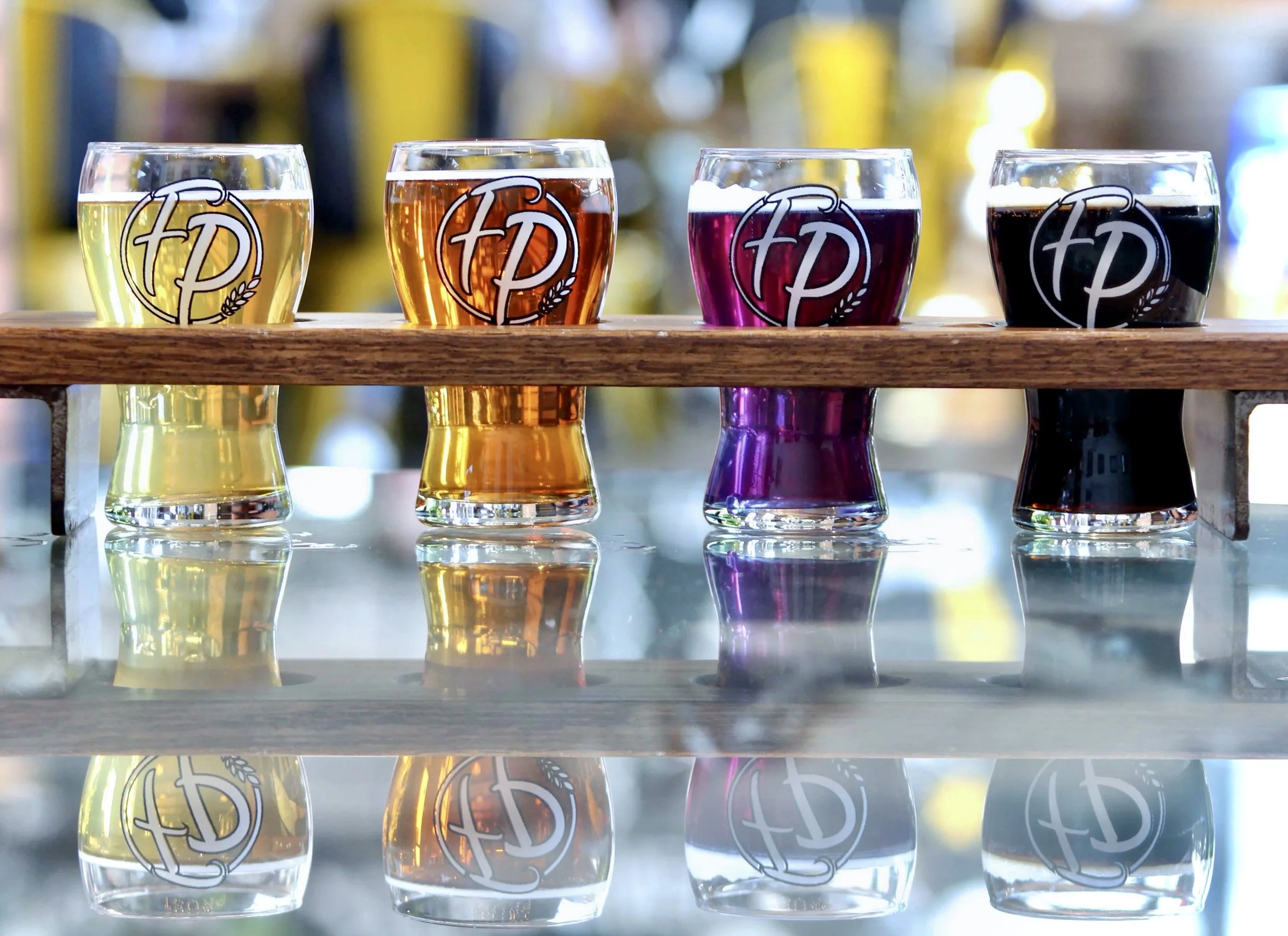How to Drink Beer: Tasting Guide
We all know how to drink: open mouth, insert beer. But do we really enjoy all aspects of the beer as we drink it? Do you notice the intricate details of the aroma or how the beer sits in your mouth? With this quick guide, not only will you understand differences like orthonasal and retronasal olfaction, but other sensations that you should be aware of while fully enjoying your beer.
“When drinking a flight or even sitting down to a multi-course beer dinner, you will want to start off with the lightest flavored and least intense beer first.”
Before even getting to the beer itself, you need to figure out what order you will be enjoying your beers. When drinking a flight or even sitting down to a multi-course beer dinner, you will want to start off with the lightest flavored and least intense beer first. This will allow your tastebuds to warm up to the more intense beers and not overwhelm them for the later ones. You will also want to match the intensity of your beer with your food, if you are eating while enjoying your beer. You don’t want your dish to overpower your beer, or the beer to overwhelm your food. They should be in harmony and complement each other.
“The color will usually indicate certain flavor profiles but is never a guarantee of strength.”
The first thing you will notice before drinking a beer is the appearance. Beers can range from pale straw color to a dark opaque inky black. The color will usually indicate certain flavor profiles but is never a guarantee of strength. There are plenty of high strength pale beers (like Dogfish Head 120 Minute IPA at 18% abv) and low strength dark beers (like Guinness Stout at 4.2% abv). Darker beers will exhibit deep roast and chocolate flavors, while paler beers will display notes of cracker and biscuit. Mid-range-colored beers can be anywhere from caramel and toffee, to more complex notes of fig and raisin. You will also notice a range of clarity from crystal clear lagers to the orange juice-like haze of New England IPA. This is just simply a result of the fermentation process and/or if the style requires filtering. Clearer and more filtered beers will likely have more of a clean and crisp finish, where hazier beers will exhibit more yeast character (as with the Hefeweizen and Belgian Wit styles) or hop character (as with the case of New England IPAs).
It is widely documented that 80% of what we taste is derived from what we smell. That’s why you shouldn’t drink beer straight from a can or bottle, or drink beer at a very cold temperature. Both of those lessen the amount of aroma that will reach your nose while drinking. Before drinking your beer, take three quick sniffs (as to not dry out your nasal cavity), followed by a longer sniff. This type of smelling is called orthonasal olfaction (odorant molecules entering the nasal cavity while inhaling), and will provide a wide range of aromas depending on the style of the beer. After swallowing, beer molecules will reach the nasal cavity via the oral cavity, allowing us to perceive even more elements of the aroma of the beer. We call that retronasal olfaction. Anything we determine from “taste” that is not the five basic taste sensations, is actually retronasal smell. This could be anything from the pine notes of Pacific Northwest hops to the clove-like phenols of Belgian Abbey Ales.
Taste is the main component of enjoying beer. You have your five basic sensations: sweet, sour, bitter, salty, and the more recently recognized, umami. All of these flavors interact with each other and impact how you perceive the beer itself. Sweetness cuts (or lessens the perception of) bitterness. By adding a larger volume of malt to a beer recipe, it will actually decrease the perceived bitterness, despite it possibly having a higher measured bitterness. The reverse is also true, adding more bitterness to a beer (whether via hops, roasted malts, or even carbonation) will lessen the perceived sweetness of a beer. The other flavor sensations have similar relationships too. Bitterness also cuts saltiness but heightens heat. Sweetness is enhanced by saltiness but is diminished by acidity.
Mouthfeel is very straightforward in its definition: how it feels in your mouth. This would cover the body of the beer, thick and chewy like an Imperial Stout or thin and refreshing like a Light American Lager. This also applies to the carbonation. Certain styles like Hefeweizen and Saison, have large thick white fluffy heads that help release a lot of the aromatics in the beer. The beer will feel very spritzy and lively in your mouth. Other styles may seem nearly flat and creamy like naturally carbonated English Real Ales or nitrogenated Guinness Stout. Other sensations include: alcoholic heat (or warmth) that comes from increased alcohol in higher abv beer; some styles may even exhibit a slight vegetal puckering drying sensation called astringency, that can be attributed to exposure to tannins. Also, off-flavors can leave a waxy feeling in the mouth, which can be very unpleasant and usually the indication of an infection in the beer.
“Cheers!”
So now you have all of the elements on how to perceive and enjoy beer! Take time to carefully look at and smell your beer, instead of just pounding it and moving on to the next one. These little intricacies will really allow you to perceive small nuances that the brewer has carefully crafted into the beer before you. If you detect new flavors and components that you didn’t otherwise detect before, don’t hesitate to ask your Funky Picnic bartender (or our brewer, Harper, if he’s around) and they would love to explain it to you!
Cheers!
Collin Zreet
Collin is a native Texan and is a founding member and co-owner of Funky Picnic Brewery and Café. He is a Certified Cicerone and Certified BJCP Beer Judge, specializing in beer and food pairings. When he is not thinking about beer, he enjoys spending time with his wife Taylor, son Alder, and dog Rocco.





